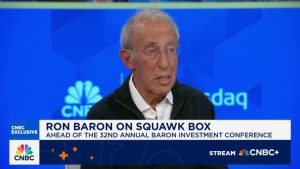From real estate to peer-to-peer lending, there are many ways to turn idle cash into a steady flow of passive income nowadays. My own preference is to invest in shares to boost my future income.
I do this within a Stocks and Shares ISA, which allows me to invest up to £20,000 a year and earn tax-free returns. Needless to say, this is great for building wealth.
If I had £10k at hand today, here’s how I’d invest it in an ISA with an eye on future passive income.
Please note that tax treatment depends on the individual circumstances of each client and may be subject to change in future. The content in this article is provided for information purposes only. It is not intended to be, neither does it constitute, any form of tax advice. Readers are responsible for carrying out their own due diligence and for obtaining professional advice before making any investment decisions.
Aiming for growth
Sticking all my money into a single stock could be risky, as share price growth and dividends are never guaranteed. Therefore, I’d consider spreading my 10 grand between, say, four stocks to spread risk.
Further, I’d invest in growth-oriented businesses to increase my portfolio size, which could then give me a larger future sum to generate more passive income.
A powerful platform
One well-known growth stock I’ve got my eye on is Uber Technologies (NYSE: UBER).
Like millions of others, I’m a regular user of the ride-sharing and food delivery platform. And I love the app when travelling because the fairs are pre-paid. This can help prevent unscrupulous taxi drivers from ripping me off.
Yet the stock has never appealed to me because of the regulatory risk and lack of company profits (to put it mildly).
I’ve been reassessing my bearishness lately though, and it seems other investors have too. The share price has risen around 83% in the last two years.
In Q1, the company’s revenue rose 15% year on year to $10.1bn. Trips grew 21% to 2.6bn, the equivalent of 28m per day on average. This ongoing growth is one reason why reason I’ve turned bullish on Uber.
But another is its rapidly improving profitability. For the full year, analysts expect $5.4bn in free cash flow, potentially rising to $9.5bn by 2026. The top line is also expected to grow by double digits for years.
That said, regulatory risk still exists. The state of Minnesota just set minimum pay rates for Uber drivers. More locations could follow, increasing operating costs.
On the flip side, it’s possible that the firm has achieved such scale and mindshare among consumers that it possesses the pricing power to offset increased costs.
Meanwhile, it’s also partnered with firms working on autonomous vehicle technology such as Aurora Innovation and China’s BYD. Passengers aside, even delivering food without a driver would improve profits significantly.
Finally, as I write, the stock looks cheap at $58. That puts it on a forward price-to-earnings (P/S) ratio of around 17.5 for 2025’s forecast earnings per share.
Passive income
By investing my £10k in stocks like Uber, I think it’s realistic to achieve a 9% return long term. In fact, that’s actually under the long-term 10% average return of the S&P 500 index (which Uber is in).
If I could invest a further £700 a month on top of my £10,000, my portfolio would grow to £827,067 after 25 years. That’s due to the extraordinary power of compounding (interest earning interest).
At this point, I could rejig my portfolio entirely towards dividend stocks. If these collectively yielded 6%, that would result in the equivalent of £4,135 in tax-free passive income every month.
This post was originally published on Motley Fool





